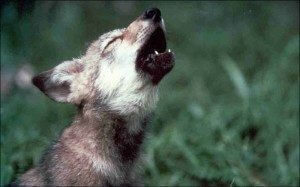
Washington Wolf Advisory Group (WAG) Meeting Agenda.
February 12-13, 2019
The Meetinghouse at Priest Point
3201 Boston Harbor Road NE
Olympia, WA 98506
Meeting Purpose:
1. WDFW provides topic updates.
2. Members identify potential 2019 changes, based on 2018.
3. Members continue post de-listing planning.
DAY 1 (Feb 12)
11:00-12:45 WDFW staff are available for members of the public to ask questions.
1:00-1:30 Check-in
1:30-2:30 Updates
a. WAG Current and Future Membership (5 min.)
b. Future WAG Facilitator (5 min.)
c. Commission Wolf Subcommittee and WAG Participation (5 min.)
d. Grazing on WDFW Lands (10 min.)
e. Member Questions from Emailed Updates1
(35 min.)
2:30-4:00 2018 Review –> Changes for 2019
(w/ a break)
a. WDFW shares staff assessments of what worked/didn’t work and why.
b. Members identify potential changes for 2019, including …
a. The protocol, and
b. Internal WAG agreements/communication
4:00-4:30 Public Comment
4:30-5:00 Check-out
6:00- Group Dinner
1 WDFW will email members, ahead of this meeting, with updates on 1) proposed post-delisting SEPA scoping
questions, 2) Dr. Wasser’s scat DNA research, 3) DNA comparison of current and former packs in the Old Profanity
Territory, and 4) a summary of current predator-prey studies.
DAY 2 (Feb 13)
8:00-8:30 Check-in
8:30-10:30 Continue 2018 Review –> Changes for 2019
(w/ a break)
Dept. <–> WAG Communication
i. Data sharing
ii. When the Dept. makes decisions
iii. Staff response time
10:30-12:00 Post De-Listing Planning
a. Refine vision.
b. WDFW proposes SEPA timeline and milestones.
12:00-12:30 Lunch
12:30-1:00 Future Meetings
a. Next meeting?
b. New member orientation?
c. Field trip?
1:00-1:30 Public Comment
1:30-2:00 Check-out
Comments
Stop the war on wolves and other wildlife and the environment.
Wolves don’t wipe out elk and other species. They take the weak and injured and strengthen the herd. They don’t slaughter the healthiest specimens. Hunters however do just that – killing “trophy animals” – by doing so, weaken the gene pool. As was demonstrated in Yellowstone, the reintroduction of wolves brought the ecosystem there back from the brink of human caused collapse. Wolves even help combat chronic wasting disease. Many ranchers allow their cattle to strip the land and corporate large scale farmers destroy the biodiversity needed for a healthy ecosystem while poisoning bees and other beneficial species with insecticides. Ranchers even sometimes purposefully graze their cattle near wolf dens, so they can kill the wolves including pups when they are lured to kill or threaten a cow or calf.
Grazing allotments on public land, welfare ranching and the ensuing environmental damage should not be allowed.
The importance of wolves to the ecosystem was illustrated in Yellowstone National Park. The gray wolf was Yellowstone’s apex predator until their extermination in the 1920’s. Elk populations exploded and the resulting overgrazing of willows and aspen seedlings and saplings was devastating, causing a trophic cascade ecosystem collapse. Beavers, who needed willows and aspen for food, shelter, and dam building. all but disappeared. Beavers play an important role in creating and enhancing habitat for many other species of animals and plants. With the disappearance of beavers, dams disintegrated turning marsh ponds into streams and there was massive loss of mature willows and aspen and erosion. Many plant and animal species suffered adverse effects. Various scavenger species (i.e. eagle, bear, raven) suffered without year-round wolf kills to feed on. In the absence of wolves, coyotes became an apex predator, driving down populations of prong horn antelope, red fox, rodents, and birds (including those that feed on rodents). In 1995, using the Endangered Species Act, the grey wolf was reintroduced to Yellowstone to restore balance. The positive effect was dramatic. The entire ecosystem began to recover from the damage caused by human intervention. Elk numbers dropped to a manageable number and wary elk spent less time in one place, allowing seedlings and saplings to grow. Beaver colonies increased from 1 to 12 after reintroduction of wolves. Coyote numbers dropped in half allowing antelope, fox and rodent populations to recover. Insects, fish, and amphibians began to thrive. Now, with a new war on wolves across the nation, we are showing that we haven’t learned a thing, hunting and trapping of wolves, bears, and other often endangered species of animals while allowing often destructive cattle grazing on public land. Additionally, use of lead ammunition is decimating scavenger species like eagles and California Condors. The lead enters the food chain and water eventually affecting people. Lead ammunition should be banned.
Wolves appear to be the best defense against Chronic Wasting disease. Additionally, evidence shows that often killing wolves and destroying the cohesiveness of a pack actually increases predation on ranch and farm animals. This is especially true when the younger inexperienced animals lose their teachers that help them learn about bringing down wild prey and resort to domesticated “easier prey”.
It’s a shame that wolves have more “humanity” than many or most people. Boycott Montana, Idaho, Wyoming, Wisconsin, Washington, Oregon, Minnesota, Michigan and Alaska as long as they allow or condone wolf killing. Stop eating beef. Ranchers are the prime impetus on the war on wolves. We also must vote the federal, state and local politicians out of office that support this slaughter. Let’s make these cruel politicians endangered species (be they republicans or democrats).
The only humane way to shoot wildlife is with a camera. A humane “trophy hunter” only collects a picture. The worth of a person can be judged by how one treats animals. An evil person is cruel to, abuses, or kills animals. A good person cares for and respects animals. “The greatness of a nation and its moral progress can be judged by the way its animals are treated.”